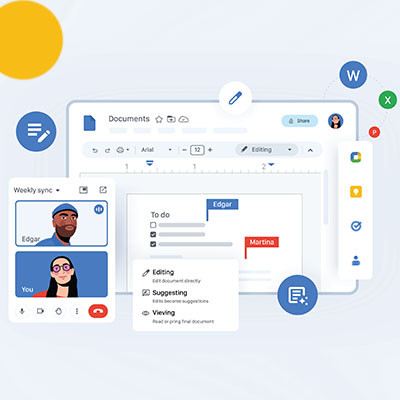Argentum IT LLC Blog
When it comes to security, one often overlooked tool is the virtual private network, or VPN. We recommend that all businesses use a VPN to keep remote and hybrid workers from inadvertently putting your business’ data at risk while out of the office. Let’s go over why a VPN is so effective, as well as what you should look for in a business-grade VPN tool.
Chances are that when you signed up for Internet service through your Internet service provider, or ISP, they hooked you up with a router that you would use to broadcast your wireless network’s signal around your office. While this is all well and good, we think you have valid reasons to replace that router with one that is better suited to your business’ needs. Why, you ask? Read on and find out.
Wi-Fi connectivity is a remarkable technology when you really think about it, and it has fundamentally changed how we work today. What hasn’t changed, unfortunately, is that hackers and cybercriminals will try to use this technology to their own advantage. Therefore, let’s discuss a few relatively simple ways that you can improve your wireless network’s overall security.
In the not-all-that-distant past, connectivity required an actual, physical connection between two endpoints. As a result, a wired connection was the only option for businesses to access online materials and resources. This leaves businesses with a choice to make: is a wired connection better for my operations, or should I implement wireless connectivity?
Twitch, Amazon’s popular streaming service where gamers and content creators broadcast to wide audiences, recently suffered a data breach. Thanks to this data breach, folks on the Internet now know just how much these content creators make, and it has exposed a whole new issue that Amazon must resolve.
Most modern businesses rely on wireless internet connectivity in their day-to-day processes. Of course, this means that their potential productivity is tied to the quality of their internet and its capability to serve the entire workforce. As a business grows it becomes more important that its Wi-Fi setup can support it. Let’s go over the process of properly scaling your network to your needs.
With more businesses moving in the direction of remote connections and mobile devices, it’s no surprise that wireless Internet is such a pain point for organizations. Sometimes it can be an exercise in frustration to connect to your office’s wireless network, and you might not really know what to do about it. Here are some ideas to try and increase your wireless network’s strength or signal.
Accessibility to the Internet is a hot topic because, at this point, almost everyone should be afforded Internet access. The fact that some people don’t have access to the Internet puts them at a severe disadvantage. One group that has major problems with accessibility are disabled people. Let’s discuss what can be done about that.
Broadband Internet access is a critical consideration for today’s world, considering how much of daily life and business is now conducted online. Having said that, Internet access is still far from a given. In the United States, the Federal Communications Commission wants to work to fix this—but to do so, they need data. To help collect this data, the FCC wants you to install a speed test application on your smartphone.
Whether you’re referring to an individual’s personal needs or their work-related responsibilities, the Internet has become an essential component to most processes. Unfortunately, financial limitations often make sufficient connectivity unattainable for many. This is why the Federal Communications Commission stepped in last month to provide some assistance.
If it is going to remain the most common Internet browser, Google Chrome always needs to have new features added to it to make it the preferable choice for most users. Recently, Chrome Actions was implemented, likely contributing greatly to that goal. Let’s look at what Chrome Actions are, and how they could prove useful.
Artificial intelligence can be used in numerous different ways, but one way you might not have anticipated is as a means of making sure people on the Internet mind their manners. Rude and inappropriate comments are remarkably common online, so it stands to reason that many companies and developers are looking for ways to minimize them. Let’s look at what some have implemented, utilizing artificial intelligence to their advantage.
The way your business uses and accesses data is changing. A short time ago, you couldn’t imagine that you would have a comprehensive strategy to keep data secure when sending and receiving it wirelessly, but today wireless transmission methods have become more secure, reliable, and fast. This month, we’ll take a look at the difference between wired and wireless connections in the modern business.
Since 1982, the technology known as the Internet of Things has given the devices around us greater capabilities through artificial intelligence and Internet connectivity. While this technology spent a long time existing under the radar, so to speak, many business functions are now relying on its benefits. Let’s take a few moments to look at how the IoT can be of use in your business.
If you consider it, it’s amazing how much trust people have in Internet-based companies. They not only believe that these companies will fulfill their expectations, but that they will work to provide protection for some of their most valuable and sensitive information. Let’s take a look at some of the data collection practices that companies use and what they do with that data.
With COVID-19 urging people to remain at home, many telecommunications companies have started to make concessions to make life easier for their customers. Whether it is used for entertainment, work, or communication, Internet access is crucial right now, and so ISPs and cell carriers are taking steps to help facilitate this.




















